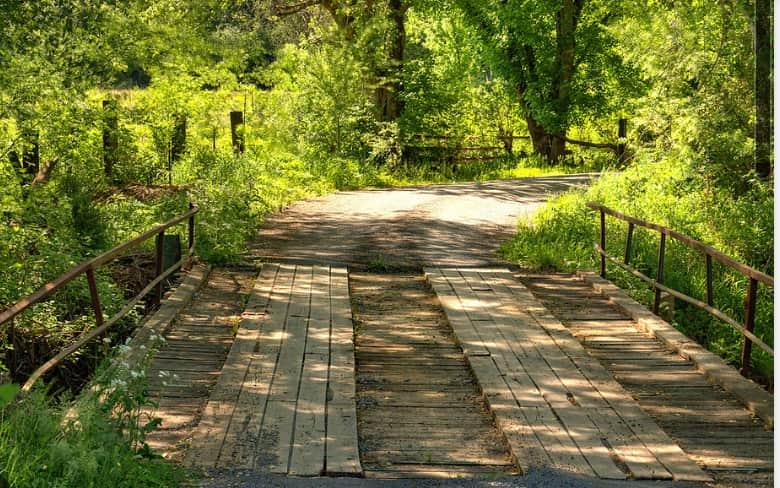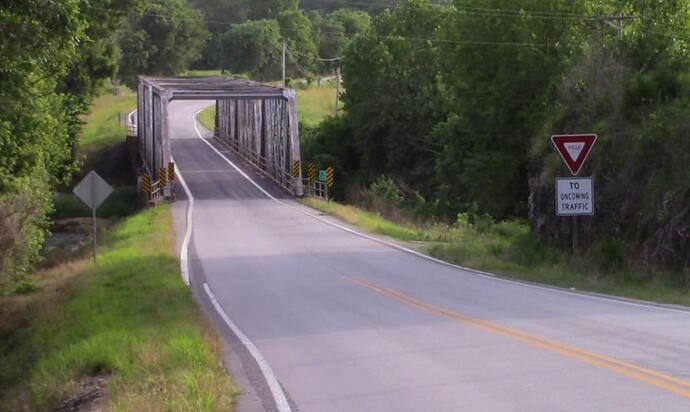I have never been able to understand what seem to effectively be one lane roads.
No room for two cars to pass.
Yes, it would keep the speed down but what are the fatal accident rates?
Tarmac the whole country. Life would be so much easier.
I was amazed to find in the centre of Glasgow a road that was something like 5 lanes wide in each direction.
Australia still has a lot of single lane roads, the advantage we have is plenty of room to enable cars to put at least two wheels in the dirt to pass safely.
Go to 40secs in to see what I mean - that’s in Queensland where road trains have right of way (you’d be foolish to push your luck in other states too)
When I drove from Exeter to the Motorway (in the UK) I went along a narrow country road where you had to find a passing place to get past an oncoming car, it was a squeeze, one of you had to stop.
Hi
Apart from some remnants of Roman Roads, such as the A5, our roads are so narrow and winding because they follow ancient field boundaries.
Bretrick
There is a good reason why some countrry road are narrow. You have to look at the history of the UK. Most were originally just tracks for a horse and cart. Then along came the motoring age and these cart tracks needed upgrading . Remember the UK dates back hundreds of years when horses werf the only means of transport.
Why do we drive on the left? Again dates back to the time when Knights held the sword in the right hand and used the left to guide the horse.
So a lot of things in the UK are based on our history
The roads classed B in the UK are often single lane - as noted above because of boundaries and because it would be impossibly expensive to widen them. But they do (should) slow traffic and should also teach respect for other drivers. So anticipating a point where cars will need to pass should also mean anticipating a place to easily pass. Spot a wide part of the road or a side road and pull in the let the other car past. This is made even easier when dedicated passing places are signposted. Yet, guess what, so many push ahead without consideration, cause face-offs with neither side willing to reverse and (my favourite piece of selfishness) using the passing place as a layby to park in.
What is interesting is the difference of approach to single track roads in France, of which there tens of thousands of kilometres. None of the above considerate behaviour about seeking a safe point to let cars pass. Instead another form of considerate behaviour of simply driving on the verge at the point the cars pass. It is assumed both cars (or vans, or lorries, or tractors, or combine harvesters) do this. It works, but requires two things. First a well maintained verge and not an overgrown & rutted verge, and second the confidence the other car will do the same. But I lack the nerve to not slow down at all when executing this passing technique - some locals just charge through.
Would be frightening encountering a triple road train at night.
I think you will find Australia had horses too for quite a while after the colony was founded in 1788 not too many road trains around then, bullock trains, yes.
Yes, single track roads aren’t too difficult if everyone known the routine and cooperates
However, one of the most frustrating situations is when a driver does not understand that passing places are for overtaking as well as crossing from opposite directions
Again, you should pull into a passing place and let the other vehicle overtake you - it is very annoying to be stuck behind a car going slower than yours and the driver will not pull in
But you don’t always have to pull in
Sometimes it is more convenient to stop opposite a passing place and let the other car just drive around you, from either direction
Roads here in ireland are even more narrow me some months back doing a delivery in a small 3.5 tonne van. Glad i was not sent there in my 7.5 tonne truck.
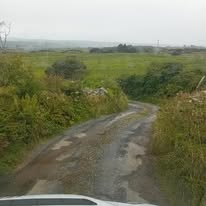
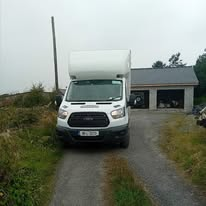
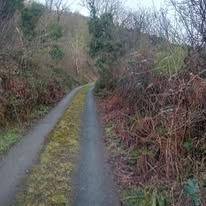
No Bruce your history on Australia is way out. Horses came a long time after riding
Kangaroos for hundreds of years . The only reason the gave up riding Kangaroos was the introduction of horses
And that introduction was necessary due the increasing complaints of “roo chafing” - whereby the relentless bouncing of the kangaroo bashed the hide of the animal against the inner hide of the rider. This is long thought to also be the reason that Australians typically end their sentences on a higher note, so called upspeak.
I thank all members who responded.
I honestly never thought about horse and carts or walking tracks.
I do believe that a grading on either side of the road will allow for two lanes.
Convince me otherwise.
The width of the tracks (the ones with the grass still growing between them) is the width of two horses walking side by side making the ruts.
This determined the width of carriages and hence how far apart the wheels would be set.
When railways/railroads were first being developed, it made sense to use the same width dimensions as carriage makers had a lot of their tools and skills based on this width.
This determined the sizes of tunnels needed for trains.
The solid fuel tanks for the shuttle were built inland and had to be transported by train, so their sizes were limited by the size of the tunnels.
So, the moral of this little story is that space exploration is related to the size of a horse’s arse.
Enjoy ![]()
![]()
That’s just crazy at those high speeds!
We still have a few single-land roads, but even more single-lane bridges in rural areas. My favorite ones are the wooden ones that force one to a crawl and muse the probabilities of collapse:
Bretwick, This is the road down to Strathy Bay, it’s a few miles from where I live and I used to go there a lot with my dog.
I did a video of the drive one day.
When you consider the motor car has only been around in reasonable numbers for just over 100 years it puts it all in perspective. when I was a boy back in the fifties there were only two people in my street that had a motor car…The district nurse, and an insurance salesman.
Even in 1960 you could walk or cycle on the (what is now) main road into town, and only see one or two vehicles on the five mile journey. Lorries (trucks in America) were a rare sight as most produce was sourced within a five mile radius, and trains were the main carrier of mail and anything else that couldn’t be produced locally.
When you consider how fast the motor car has multiplied in 60 years, it’s not hard to understand that it cannot go on multiplying at the same rate for the next 60 years or else nobody will be going anywhere. Any ideas?
My sister and I used to go on long cycle rides along country lanes the1950s and early 60s. Two abreast nearly all the time and rarely needing to go single breast to allow a car to pass. Any cars were a lot less wide than many are now.
We only had a couple of car owners in the road and all the kids could play out in it, even play cricket from one side of the road to the other. Cricket stumps chalked on the front garden wall, bowling from one side of the road to the other.
A golden era for children I reckon.



